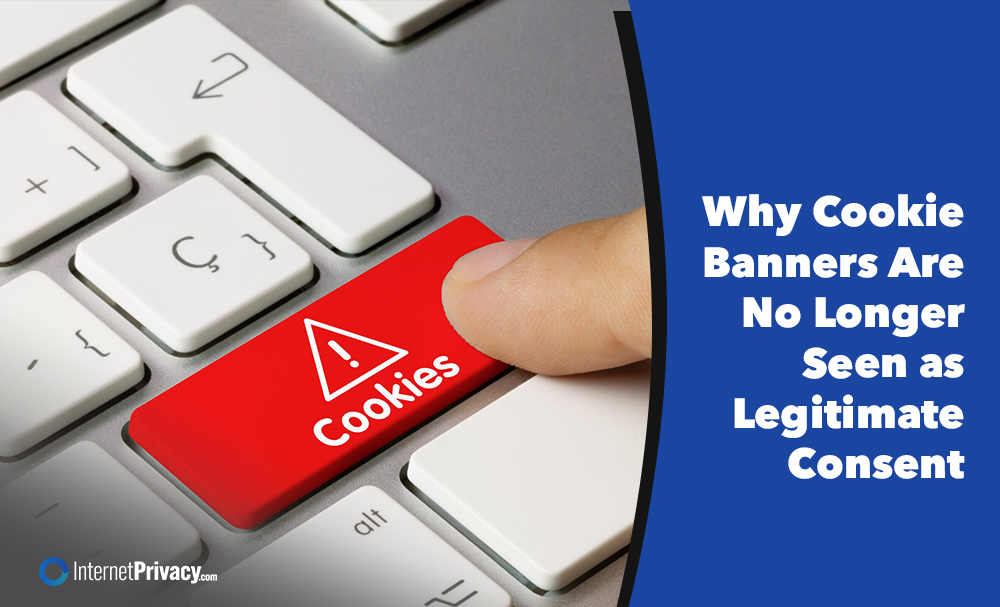Why Cookie Banners Are No Longer Seen as Legitimate Consent

Cookie banners were once seen as a simple way to meet data privacy laws. But today, they’re falling short. Many banners confuse users, hide real choices, or make it harder to opt out of tracking than to opt in. As privacy regulations evolve and users become more privacy-aware, these banners are increasingly being called out for what they are: often misleading, rarely empowering, and sometimes even non-compliant with global privacy laws.
What Are Cookie Banners?
Cookie banners are notices that appear on websites when a user visits, informing visitors about the website’s cookie usage and seeking to obtain users’ consent for data collection and processing personal data. These banners are designed to comply with privacy laws such as the European Union’s General Data Protection Regulation (GDPR) and the California Consumer Privacy Act (CCPA). Ideally, a cookie banner explains which types of cookies are used—such as essential, analytics, and third-party—why they’re used, and how users can manage their consent preferences.
A well-designed, gdpr compliant cookie banner provides detailed information about cookie categories and offers users granular control over which types of cookies they accept or reject. It also ensures that personal data collected through cookies is processed only after valid consent is obtained, in line with data privacy regulations.
However, many cookie banners do not meet these standards. Instead, they bury options, use vague or legalistic language, or rely on dark patterns that push users toward accepting all cookies—especially those used for targeted advertising and google analytics—without fully informing visitors or allowing them to reject non essential cookies easily.
Why Cookie Banners Are Important (and Problematic)
Cookie banners are meant to give website visitors a clear choice before any data collection or data processing begins. Under GDPR and similar privacy laws, websites must obtain explicit user consent before processing non-essential cookies or processing sensitive data. This means that prior permission is required before placing cookies that track users for marketing or analytics purposes.
Yet in practice, many cookie banners:
- Make it difficult to reject cookies or opt out of consent
- Fail to inform visitors about what personal data is collected and why
- Assume consent through implied consent methods, such as continued browsing or scrolling
- Use pre-checked boxes or default opt-in settings
These tactics undermine the principle of valid consent, which must be freely given, specific, informed, and unambiguous. Without genuine consent, cookie banners fail to comply with privacy regulations and do not respect user privacy or data subject rights.
How Cookie Banners Have Been Misused
Implied Consent
Some websites rely on implied consent, assuming that users agree to tracking if they scroll or continue using the site. Under GDPR and other data privacy regulations, this approach is insufficient. Consent must be explicit user consent, requiring a clear affirmative action such as clicking “Accept” on a cookie consent banner.
Pre-Checked Boxes
Another common misuse is having pre-checked consent boxes for non-essential cookies. The Court of Justice of the European Union has ruled that pre-ticked boxes do not constitute valid consent. Users must actively opt in, not be opted in by default.
Vague Language
Cookie banners that use vague terms like “improve experience” or “personalize content” fail to inform users about the specific types of data collected and the purposes of data processing. GDPR compliant cookie banners use plain language to notify users who collect data, how it’s used, and with whom it is shared.
Why Cookie Banners Are Losing Legitimacy
More regulators and users are questioning the effectiveness of current cookie banners. Here’s why:
1. Lack of Real Choice
Many banners prompt users to accept all cookies with a single click, often hiding the “reject non-essential cookies” option or making it difficult to find. This imbalance undermines the validity of consent.
2. Poor Compliance
Despite clear legal requirements, many websites still do not follow best practices. Some load-tracking scripts and third-party cookies are used before consent is obtained, thereby violating the principle of prior authorization.
3. Public Awareness Is Growing
People are more aware of privacy risks and data collection practices. They are reading cookie banners more carefully, questioning vague terms, and expecting real options—not just legal cover.
Better Alternatives to Today’s Cookie Banners
To restore trust and comply with privacy laws, websites need to rethink how they obtain consent. Here are some better practices for a compliant cookie banner:
Granular Consent
Offer users the ability to manage consent for different cookie categories such as essential, functional, analytics, and marketing cookies. This allows visitors to reject non-essential cookies while accepting those necessary for website functionality.
Privacy-Friendly Defaults
Do not collect or process personal data until clear, explicit user consent is obtained. This means blocking all non-essential cookies and scripts until consent preferences are set.
Clear, Simple Language
Use plain language to explain what data is collected, why it is collected, who uses it, and for what purposes. Provide detailed information about cookie categories and data processing practices.
User-Friendly Controls
Make it as easy to reject cookies as it is to accept them. Include a prominent “reject all” button alongside “accept all” and options to customize consent preferences.
What Companies Can Do Now
Review Consent Mechanisms
Conduct a thorough audit of your current cookie banner and consent management platform. Does it offer real choice? Does it prevent data collection before consent is given?
Update Language and Layout
Simplify the language used in your cookie banner. Avoid vague or misleading statements. Ensure that consent is active, informed, and freely given.
Stay Current with Regulations
Privacy laws and guidelines from data protection authorities evolve rapidly. Regularly monitor updates in your jurisdiction and adapt your cookie consent banner accordingly.
Use a Trustworthy Consent Management Platform
Leverage tools like Google Consent Mode and reputable Consent Management Platforms (CMPs) to manage consent preferences, block non-essential cookies until consent is obtained, and maintain records of consent for compliance audits.
Final Thoughts
Cookie banners were initially intended to protect user privacy and empower users with control over their data. Unfortunately, many have become tools for pushing tracking without real user consent, risking non-compliance with data privacy regulations and damaging user trust.
The landscape is changing. Regulators, privacy advocates, and users are pushing for higher standards and better transparency. If you operate a website, don’t treat cookie banners as a mere box to check. Instead, make them meaningful by providing detailed information, clear choices, and genuine control over cookie usage.
By doing so, you not only protect your users’ privacy and comply with global privacy laws but also strengthen your brand reputation and build lasting trust with your website visitors.





